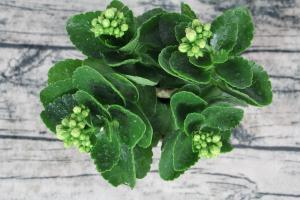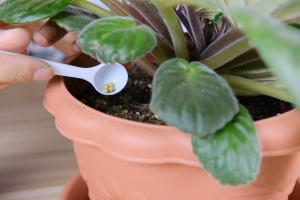Does Spraying Water on Plants Keep Them from Freezing?
During the cold winter months, plants are at risk of suffering from frost damage, which can result in wilted leaves, blackened foliage, and even plant death. To prevent this from happening, gardeners have employed various methods to protect their plants from freezing temperatures. One such method is to spray water on the plants, but does it really work?
The Science Behind Spraying Water
Spraying water on plants before a frost or freeze is a technique that has been used for decades. The science behind this method is fairly simple. Water, when it freezes, releases heat energy. This process is known as the heat of fusion. By spraying water on plants, the water will help to regulate the temperature around the plant by releasing heat energy as it freezes. This can effectively protect the plant from freezing damage.
However, this method only works under certain conditions. Firstly, the water must be applied before the frost or freeze occurs. Once the plant has already been exposed to cold temperatures, spraying water on it will not make any difference. Secondly, the surrounding temperature needs to be just right. If the temperature drops too low, the water may freeze too quickly, causing more harm than good.
Limitations of Spraying Water
While spraying water on plants can be an effective way to protect them from freezing, it is not always the best method. There are several limitations that gardeners need to be aware of when using this technique. For example, spraying water requires a constant supply of water and the ability to apply it evenly to all parts of the plant. This can be difficult, especially for larger plants or those in hard-to-reach areas.
Furthermore, spraying water can also create a slip hazard if the temperatures are below freezing. Gardeners need to take precautions to prevent injuries when using this technique. Additionally, spraying water is not environmentally-friendly and can waste a lot of water, which is a precious resource in some areas.
Alternative Methods to Protect Plants from Freezing
There are several alternative methods that gardeners can use to protect their plants from frost and freezing temperatures. Covering plants with blankets, tarps, or plastic sheeting can effectively trap heat and protect the plant from the cold. Using mulch or straw can also help to insulate the soil and retain heat around the plant's roots.
Gardeners can also use portable heaters, such as space heaters, to keep the air temperature around the plant above freezing. However, heaters need to be used with caution, as they can be a fire hazard if not used properly.
In Conclusion
Spraying water on plants before a frost or freeze can be an effective way to protect them from freezing damage, but it is not without its limitations. Gardeners need to be aware of the surrounding temperature, the amount of water needed, and the potential hazards associated with using this technique. There are several alternative methods that can be used to protect plants from the cold, so gardeners should choose the method that best suits their needs and resources.

 how many times do yo...
how many times do yo... how many planted tre...
how many planted tre... how many pine trees ...
how many pine trees ... how many pecan trees...
how many pecan trees... how many plants comp...
how many plants comp... how many plants can ...
how many plants can ... how many plants and ...
how many plants and ... how many pepper plan...
how many pepper plan...
































